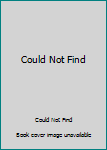Basics of Semiotics (Advances in Semiotics)
Select Format
Select Condition 
Book Overview
Compared to its previous English edition (1990), the present version has been expanded and revised. It has almost doubled in volume - the chapters from eight to eleven are new, and the first, but... This description may be from another edition of this product.
Format:Hardcover
Language:English
ISBN:0253316766
ISBN13:9780253316769
Release Date:January 1990
Publisher:Indiana University Press
Length:149 Pages
Weight:0.70 lbs.
Customer Reviews
1 rating
Excellent Philosophical Introduction to Semiotics
Published by Thriftbooks.com User , 23 years ago
Having waded through piles of literature on semiotics, I found that Deely's text was precisely what I had been looking for. Texts in semiotics seem to divide into two sorts. On the one hand, there are theoretical texts that introduce a maze of sign distinctions and accounts of semiosis. On the other hand, there are texts in applied semiotics that uncover the structures of various sign systems. Both sorts of texts are agreed that the semiotic approach represents a major shift from the tradition of representational thought, but are murky on the precise nature of this shift. It is this that makes Deely's book unique. Deely carefully develops his introduction to semiotics with respect to the philosophical tradition, showing how it offers a new alternative to the traditional positions of realism and idealism, that is lucidly argued and which draws out many of the not immediately noticeable consequences of the semiotic approach. While it is true that Deely's text sometimes suffers obscure usages of language (no doubt resulting from the influence of scholastic and Rennaissance theories of signs on his thought), this occasional obscurity is more than offset by his ability to draw out the implications of semiotics and show its relevance to various epistemological and ontological debates that have informed philosophy.






